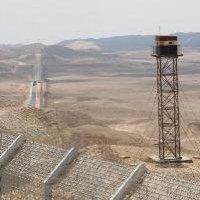![]()
Tue, Aug 30, 2011 | WikiLeaks
WikiLeaks: frustration over the bread crisis, rising food prices and corruption leads to social unrest in Egypt
How the bread crisis, rising food prices, corruption, labor unrest and low wages was [and is] fueling the social unrest in Egypt.
From the summary: Rising global food prices are hitting Egypt’s poor hard and are the major contributor to stubbornly high inflation (14.4% y-o-y in March). Past episodes of rising food prices (e.g., 2003-05) pushed Egypt’s poverty rate up, and some fear this is happening again now. Almost every international media report on the global food crisis mentions Egypt’s bread lines. The bread lines, however, are less an indication of scarcity than of corrupt leakages in a bread subsidy system that does not really target the poor. The economic reformers in the GOE responsible for Egypt’s 7% growth rate recognize that market-distorting subsidies are ineffective in combating poverty. But the GOE can not change the subsidy system at a time of high global food prices. Fear of change is too powerful among the population, and reform of the subsidy system at such a volatile moment could lead to more of the social unrest Egypt has seen in the past few months.
And this is not going to change overnight.
Source: WikiLeaks
Reference Created Classification Origin 08CAIRO932 2008-05-05 15:16 UNCLASSIFIED//FOR OFFICIAL USE ONLY Embassy Cairo
VZCZCXYZ0000
RR RUEHWEBDE RUEHEG #0932/01 1261516
ZNR UUUUU ZZH
R 051516Z MAY 08
FM AMEMBASSY CAIRO
TO RUEHC/SECSTATE WASHDC 9170
INFO RUEATRS/DEPT OF TREASURY WASHDC
RUCPDOC/USDOC WASHDC 0400UNCLAS CAIRO 000932
SENSITIVE
SIPDISSTATE FOR NEA/ELA, NEA/RA AND EEB/TPP/ABT/ATP JANET SPECK
USAID FOR ANE/MEA MCCLOUD AND RILEY
TREASURY FOR MATHIASON AND CONNOLLY
COMMERCE FOR 4520/ITA/ANESA/OBERGE.O. 12958: N/A
TAGS: ECON EAGR EAID EFIN EINV ELAB PGOV EG
SUBJECT: RESPONSE: IMPACT OF RISING FOOD/COMMODITY PRICES – EGYPTRefs: State 39410
Cairo 150
Cairo 152
Cairo 282
Cairo 530
Cairo 536
Cairo 587
Cairo 621
Cairo 697
Cairo 715
Cairo 724
Cairo 779——-
SUMMARY
——-¶1. (SBU) Rising global food prices are hitting Egypt’s poor hard
and are the major contributor to stubbornly high inflation (14.4%
y-o-y in March). Past episodes of rising food prices (e.g.,
2003-05) pushed Egypt’s poverty rate up, and some fear this is
happening again now. Almost every international media report on the
global food crisis mentions Egypt’s bread lines. The bread lines,
however, are less an indication of scarcity than of corrupt leakages
in a bread subsidy system that does not really target the poor. The
economic reformers in the GOE responsible for Egypt’s 7% growth rate
recognize that market-distorting subsidies are ineffective in
combating poverty. But the GOE can not change the subsidy system at
a time of high global food prices. Fear of change is too powerful
among the population, and reform of the subsidy system at such a
volatile moment could lead to more of the social unrest Egypt has
seen in the past few months. End summary.——
DEMAND
——¶2. (U) With a growing population and 7% economic growth, food
demand has been and is expected to remain strong. Wheat, corn,
sugar, beans, rice and vegetable oil are the most important staple
commodities consumed in Egypt. Egypt is a net importer of all these
commodities except for rice, which Egypt traditionally exports. The
import/local production ratio for wheat and corn are about 50/50,
sugar is about 40/60 and beans are about 30/70. Egypt is almost
completely dependent on imports of cooking oil, importing palm and
sunflower oil, as well as corn and soybeans, which are processed
locally to make oil and also used as animal feed.¶3. (SBU) As a net food importer, Egypt’s domestic prices have risen
in tandem with international commodity prices. Egypt’s Central
Agency for Public Mobilization and Statistics (CAPMAS) reports that
the price of the average consumer food/beverage basket rose 24% from
March 2007 to March 2008, 27% in rural areas. Individual items
exhibited even greater increases, with vegetable oil and bread up
45% and 48%, respectively. Though CAPMAS’s statistical methods have
improved recently, data may still substantially underestimate actual
price increases for certain staple goods. Informal surveys by FAS,
for example, indicate that consumer-ready retail flour and rice
prices more than doubled in the past year and retail vegetable oil
prices have almost tripled.¶4. (SBU) When wheat/flour prices began to accelerate in early 2007,
consumers began switching to rice. But as rice prices then
skyrocketed as well, the rice-wheat flour substitution trend abated.
As global vegetable oil prices rose, imports of palm oil were down,
but this was mainly due to a decision by Malaysia – Egypt’s
traditional supplier – to meet commitments to other buyers first.
Declining palm oil imports were offset by increased soybean and corn
imports. Flour/bread is the foundation of the Egyptian diet, and
total demand remains firm. With higher wheat prices, however,
demand for price-controlled or “subsidized” bread has increased as
market prices of unsubsidized bread have risen. Low income
consumers, who were once able to afford occasional purchases of
unsubsidized bread, now increasingly opt to buy lower quality
subsidized bread. Anecdotal evidence indicates that leakages of
subsidized bread for use as animal feed also increased as market
prices of normal feed rose.——
SUPPLY
——¶5. (U) While it is premature to forecast with any specificity,
reports suggest that Egypt’s wheat farmers are increasing area
devoted to wheat. The General Authority for Supply of Commodities
(GASC) is the central authority for domestic procurement and
importation of wheat. To attempt to reward local producers for the
higher international prices, the guaranteed price GASC pays farmers
was increased to $466/ton for the current harvest season (which will
begin in May), more than double the previous crop year, but still
hundreds of dollars below international prices. Several large land
reclamation projects are being brought into production, but Egypt
lacks the productive land and water resources necessary to expand
domestic production in any meaningful way. Higher fuel and
fertilizer costs are also taking a toll on Egypt’s ability to
provide an adequate supply response. The overriding constraint on
increased production, however, continues to be lack of sufficient
land and water, a problem that has plagued Egypt since ancient
times.¶6. (SBU) GASC’s stated policy is to maintain a six-month supply of
wheat and, even as prices have risen dramatically, GASC and private
importers have been able to acquire adequate supplies on the
international market to meet this goal. Recently, however, GASC has
held on average only about 2 months of stocks, including “pipeline”
stocks, or product in-transit. With the sharp increase in prices,
wheat is simply too expensive for GASC to maintain a large
inventory.¶7. (U) Egypt usually produces a surplus of rice, exporting about 1
million tons per year. But when local rice prices increased from
about $450/ton to $750/ton in April 2008, Egypt banned rice exports
to ensure that sufficient supplies remain in the domestic market.—————
ECONOMIC IMPACT
—————¶8. (SBU) The increase in wheat prices exposed and exacerbated
inefficiencies and corruption in Egypt’s subsidized flour/bread
supply and distribution system. Every consumer in Egypt is eligible
to buy subsidized bread at about $.01 per flat, round “loaf.” As
world prices rose, the difference between subsidized flour and
non-subsidized flour prices increased commensurately, leading to an
increase in numbers of millers and bakers willing to illegally sell
their quota of subsidized flour on the black market. This practice,
combined with greater demand from consumers opting for subsidized
bread rather than higher quality, more expensive bread, led to long
lines at public bakeries. Anxiety over long bread lines resulted in
media reports of bread “shortages.” However, the lines were less
the result of short supplies than of diversion of subsidized flour
to the black market and precautionary purchases (“hoarding”).¶9. (U) Food prices are the driving force behind inflation in Egypt,
although rising prices for construction materials are also a
significant factor. High food prices have been manageable within
Egypt’s balance of payments, as a capital account surplus from
strong investment inflows offsets the widening trade deficit.
However, the increased cost of food subsidies (along with energy
subsidies) will make it impossible for the GOE to meet its goal of
reducing the deficit from 7% currently to 4% by 2011. The FY
2007/08 budget for food subsidies stands at LE 20 billion ($3.7
billion), a 33% increase over FY 2006/07. The GOE also recently
announced plan to add some 15 million people to the ration-card
system in place since the 1950s. The currently strong economic
growth, which reached 7% this fiscal year, is expected to continue.¶10. (U) Inflation disproportionately affects the poor, and food
prices disproportionately affect the poorest. World Bank (WB)
analysis of the 2005 Household Income and Expenditure Survey (HIES),
the best information available to date, estimates that some 3.8% of
Egypt’s population was so poor in 2005 (spending under $1/day) that
their entire income was not enough for an adequate diet. Another
15.8% of the population was poor enough that scrimping on food for
other needs probably left them with inadequate diets, making a total
of 19.6% of the population that was hungry as of 2005. As noted
above, the GOE’s subsidized bread distribution does not target this
group: subsidized bread is available to everyone and the very poor
are often not reached. According to the WB, Egypt’s poor spend
approximately 45% of their income on food.¶11. (U) The WB blames a previous round of food price increases
after 2003 (following the devaluation of the Egyptian Pound against
the U.S. Dollar), along with the failure of the bread distribution
system to target the poor, for increasing the proportion of the
population that is very poor from 2.9% in 2000 to 3.8% in 2005. The
“scrimping” group also grew from 13.8% of the population in 2000 to
15.8% in 2005, for a total increase of 2.9% in the share of the
population that was hungry (16.7% to 19.6%). A similar increase is
presumably occurring now, although we must await a fresh HIES survey
to measure accurately. The GOE plans to accelerate HIES surveys
from once every five years to one every second year.¶12. (U) The impact of higher food prices reaches higher income
levels as well, but economic growth has mitigated the impact for
those with more income. The 2005 HIES data found a reduction in the
“near poor” (the non-poor with incomes below about $2/day) from
25.9% of the population in 2000 to 21.0% in 2005. The increase in
economic well-being for middle income earners stems from better job
opportunities, which outweighed the impact of higher food prices
after 2003. As economic growth has accelerated since 2005, this
affect is likely to have strengthened as well. Fruit and vegetable
farmers are benefiting somewhat from high prices, as they can now
sell domestically at international prices. Grain farmers, however,
depend partly on GASC’s purchase prices. Although higher now,
GASC’s prices are still lower than international prices.—————-
POLITICAL IMPACT
—————-¶13. (SBU) Sporadic violence has broken out in bread lines at public
bakeries, killing eleven people over the past few months. Public
frustration over the bread crisis and spiraling food prices have
become intermingled with labor unrest, mainly dissatisfaction with
low wages and lack of action by government-controlled labor unions.
Participants in recent demonstrations in the textile factory town of
Mahalla for higher wages were confronted by security forces and
turned violent. Opposition parties and also many members of the NDP
in parliament have called for greater government action to control
food prices. In his Labor Day speech, President Mubarak announced a
30% increase in base public sector wages, and had previously ordered
the Cabinet to find funds in the budget to increase subsidy
expenditures.—————————
GOVERNMENT POLICY RESPONSE
—————————¶14. (U) In addition to banning rice exports, the GOE lowered duties
on vegetable oil and dairy products. Duties on bulk commodities
(corn, soybeans, wheat) were already zero. Egypt and Syria usually
sign an annual rice/wheat barter deal. However, with Egypt’s ban on
rice exports and concerns that Syria’s wheat crop may be well below
average this year, this traditional barter deal may not go through
in 2008/09. The Central Bank raised interest rates several times
over the last few months in an attempt to control inflation, but
this has not been very successful. Substantial liquidity from Gulf
oil money prevents interest rate increases from dampening inflation.¶15. (U) To control corruption, the GOE has ordered the separation
of bread production from distribution. Public bakeries receiving a
quota of subsidized flour are now required to deliver a quota of
subsidized bread at distinct distribution centers. The GOE also
directed police and military bakeries to produce and distribute
subsidized bread for the general public. Reports of bread lines
have subsided somewhat since implementation of these measures.¶16. (U) In addition to subsidized bread, which is available to
anyone, the GOE provides ration cards for about 11.1 million people
and plans to add another 15 million soon, as noted above, bringing
the total to nearly one-third of the population. The program
provides sugar, edible oil, rice, beans, lentils, and tea to ration
card holders. Like the bread subsidy system, however, the ration
card system does not adequately target the poor and is riddled with
corruption. By having goods sold at both a “market price” and a
“subsidized price” in the same store, the temptation for the store
owner to sell the subsidized goods at the market price is simply too
great. The GOE is attempting to reform the ration card system by
introducing food subsidy “smart cards,” though these are not yet
widely used, and we have no evidence yet of the cards’ success at
addressing corruption. The GOE eventually plans to move to a cash
subsidy system to replace all in-kind programs, but this plan is not
politically feasible for now.¶17. (U) Prior to the steep increase in commodity prices, the
private sector was assuming an increasing role in imports and the
GOE was considering elimination of GASC and privatization of all
wheat procurement and distribution. The rise in food prices,
however, led to calls for the GOE to be more active in managing
inflation, which in turn has stalled efforts to privatize wheat
imports. With public calls for the GOE to do more, GASC’s role in
wheat imports is again dominant.—————-
POLICY PROPOSALS
—————-¶18. (SBU) We support the GOE’s plans to move gradually to a cash
subsidy program that targets the poor and reduces waste and
corruption. We recognize, however, that Egypt’s culture is
powerfully resistant to change, so maintaining a broad food safety
net is unavoidable for the time being. If the deeply inequitable
and extremely expensive fuel subsidies continue to be reduced (per
the recent increase in fuel prices for heavy industrial users),
Egypt may be able to bear the price of a limited and better targeted
food subsidy system. However, the GOE should not derail market
forces in the bulk of the commercial markets for grains and other
food commodities. Cost-reducing investments, including
rationalization in use of land and water resources and improved
irrigation methods, are also critical to increasing agricultural
production in cost-effective manner.SCOBEY



 RSS
RSS












WikiLeaks: frustration over the bread crisis, rising food prices and corruption leads to social unre http://t.co/SyyCtO5p
#Wikileaks: frustration over the bread crisis, rising food prices and … http://t.co/zgV7B5jv #blog
#Wikileaks: frustration over the bread crisis, rising food prices and … http://t.co/zgV7B5jv #blog
#Wikileaks: frustration over the bread crisis, rising food prices and … http://t.co/zgV7B5jv #blog
RT @wikicables #Wikileaks: frustration over the bread crisis, rising food prices and … http://t.co/sYzBvLaz #blog
RT @crethiplethi: WikiLeaks: frustration over the bread crisis, rising food prices and corruption leads to social http://t.co/bnjJlDoD
WikiLeaks: frustration over the bread crisis, rising food prices and corruption leads to social unre http://t.co/SyyCtO5p
RT @wikicables #Wikileaks: frustration over the bread crisis, rising food prices and … http://t.co/sYzBvLaz #blog